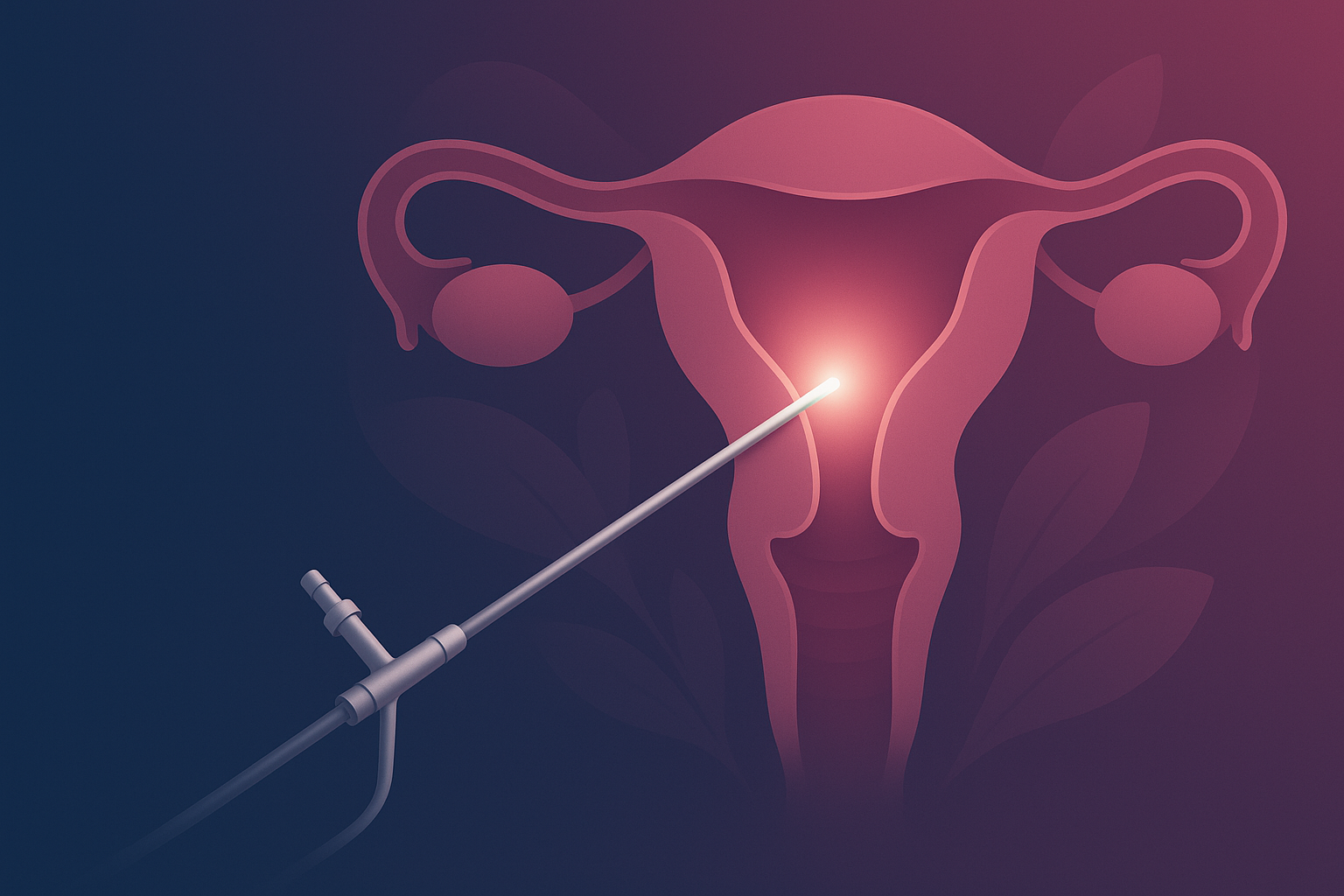


Hysteroscopy is a minimally invasive procedure that allows your doctor to directly see the inside of your uterus using a thin, lighted telescope-like device called a hysteroscope. It helps diagnose and sometimes treat fertility-related problems like fibroids, polyps, scar tissue, or abnormal bleeding — without any surgical cuts or long hospital stays.
At Dr. Aishwarya’s clinic, hysteroscopy is performed gently and precisely, with the goal of identifying and resolving issues that may be silently affecting your ability to conceive or maintain a healthy pregnancy.
Hysteroscopy involves inserting a narrow telescope-like camera through the vagina and cervix into the uterus. It allows the doctor to:
It’s a safe and effective procedure that can be done as a day-care procedure — meaning you go home the same day.
Used to examine the uterus and detect possible causes of infertility, miscarriage, or abnormal bleeding.
Used to treat conditions identified during the diagnostic hysteroscopy — such as removing fibroids, polyps, or adhesions — using fine surgical instruments.
You may be advised a hysteroscopy if you have:
It is also sometimes advised before an IVF cycle to improve embryo implantation chances.
Many uterine conditions can silently affect fertility or cause miscarriages without showing up on basic scans. Hysteroscopy helps:
Fellowship-trained expertise in minimally invasive gynaec procedures
20+ hysteroscopies performed with high diagnostic accuracy
Gentle, patient-first approach to minimise discomfort
Operative solutions offered in the same sitting when needed
Done under expert supervision in a safe, sterile environment
Same-day discharge with personalised follow-up care
It may cause mild cramping. Diagnostic hysteroscopy can be done without anaesthesia in some cases. Operative hysteroscopy is usually done under light anaesthesia to ensure comfort.
You can return home the same day. Most patients resume routine activities within 24–48 hours.
No. It’s a completely non-invasive procedure done through the vaginal route — no cuts, no stitches.
Yes. If there are any uterine abnormalities, treating them before embryo transfer may improve implantation and pregnancy chances.
Very minimal. Slight bleeding or cramping is common. Serious complications are extremely rare when performed by experienced hands.
If something is silently standing in the way of pregnancy, hysteroscopy can help find it — and fix it. It’s a small step that can make a big difference.
Dr. Aishwarya S Fertility & Reproductive Medicine Specialist dedicated to compassionate, evidence-based care for individuals and couples.
© Copyright 2025 @ Dr.Aishwarya | Designed & Developed By MediGrow.ae